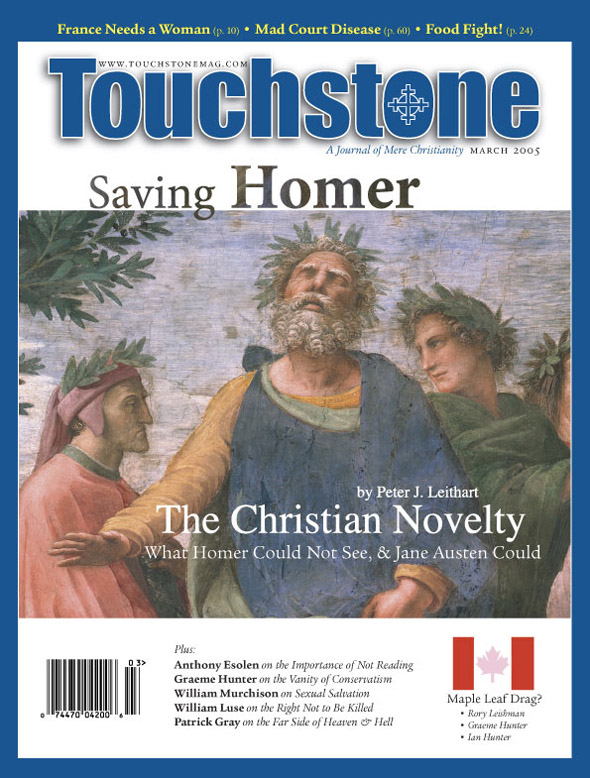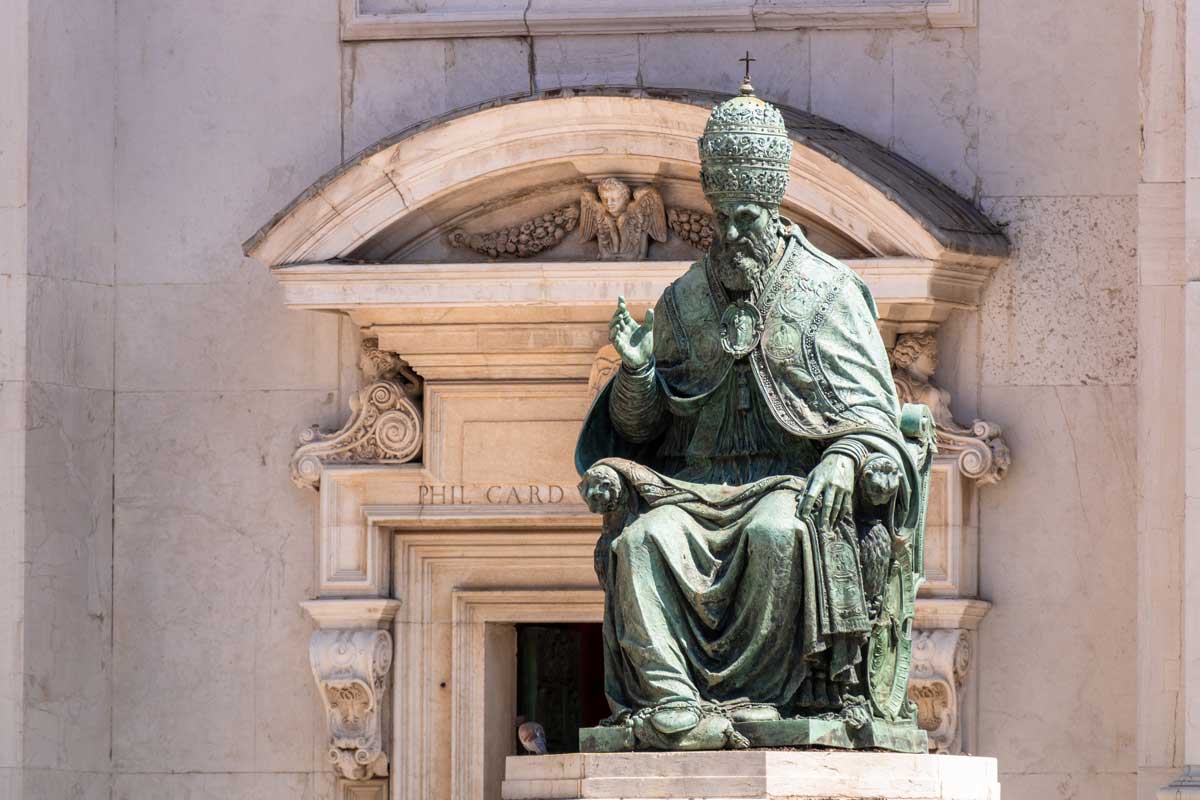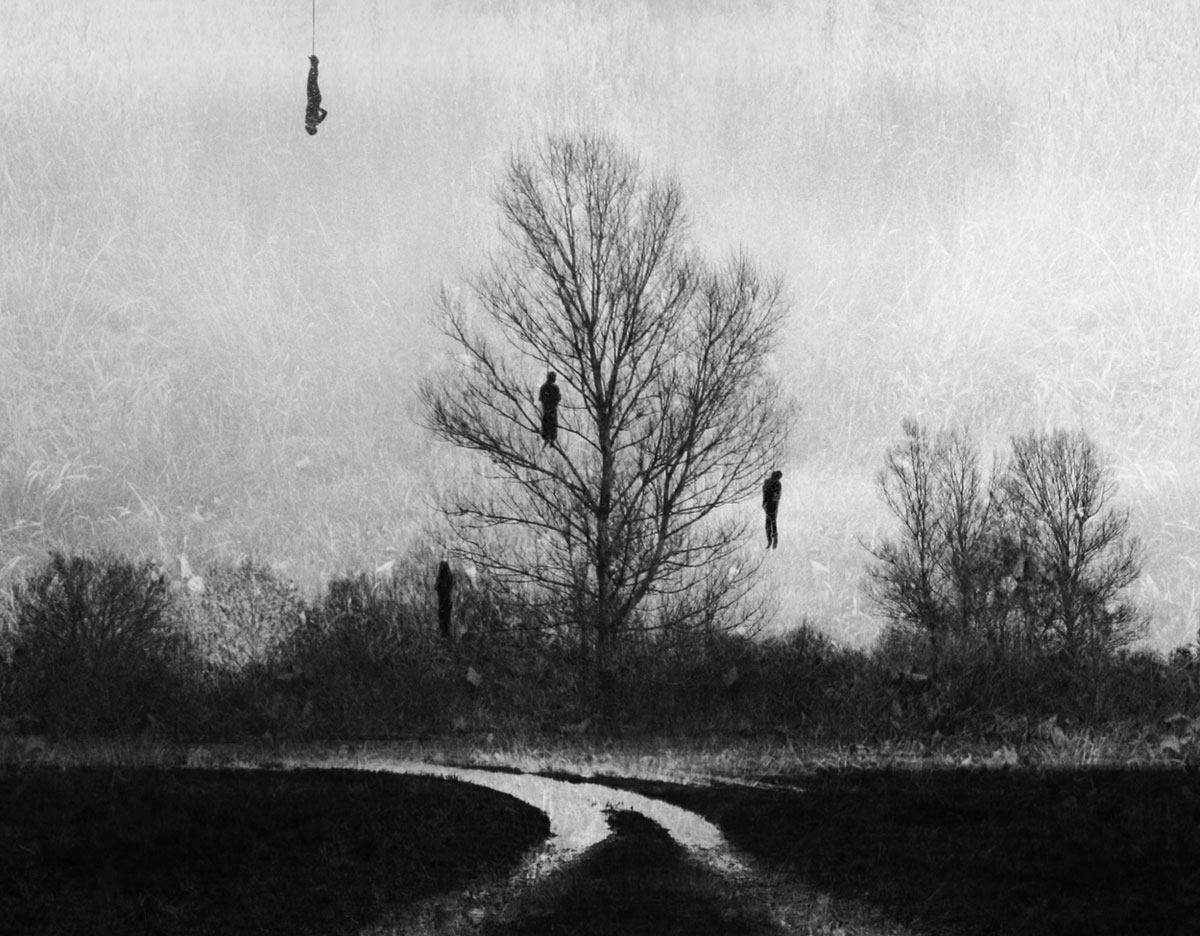Comic Belief
Patrick Gray on the Far Side of Heaven & Hell
What do Americans believe? Public opinion polls are notoriously unreliable. People lie to pollsters about religion, and even when they tell the truth, different people mean quite different things by the words God, heaven, and hell. Is there a better way to take the spiritual pulse of the populace?
Perhaps the answer is in the comics section. Gary Larson’s “The Far Side” was arguably the most popular cartoon of the last quarter of the twentieth century. Published from 1980 until its retirement at the end of 1994, it was eventually syndicated in over 1,900 newspapers, and volumes of Larson’s collected cartoons have repeatedly topped the best-seller lists.
By my conservative calculation, about four percent (six months’ worth) of the 4,000 or so panels in The Complete Far Side, published a year ago, deal with conventional religious themes. Four percent may not sound like much, but it is much higher than the percentage of religion-related content in the rest of the newspaper. In The Complete Far Side, Larson and his editor recount their efforts to avoid losing the audience through obscurantism or unduly offending its sensibilities. The substance and tone of the series therefore reveal something about the average reader’s cultural literacy and what is deemed acceptable in public discourse about religion.
But you can’t please all the people all the time. Larson has included dozens of letters objecting to his work. Very few of these address the entries treating religious themes. (Most common are letters from readers who claim he encourages cruelty to animals.)
References to contemporary religious phenomena appear on occasion. For example, Larson offers soft jabs at creationism and televangelists. By and large, however, the subject matter is biblical. Given Larson’s fondness for animal subjects, it comes as no surprise that Noah’s Ark is among the most frequently recurring motifs.
Larson’s God is the vaguely Judeo-Christian deity of the American civil religion, and several entries engage in theological speculation: Are there limits on God’s omniscience? (How would he fare on a TV quiz show?) Might process theology help explain God? (What was God like as a kid?) Is God benevolent and all-loving, or is he ever capricious? (Is there a “smite” button on the keyboard of God’s computer?) Where do humans fit into the divine plan? (Did God see the good work he had done in forming the animals only to stop and think, “Well, now I guess I’d better make some things to eat you guys”?)
This is clearly not the “god from afar” of ancient Israel described by Max Weber. Rather, Larson is answering the grammatically incorrect question posed by Joan Osborne in her 1996 pop hit “What If God Was One of Us,” only without all the teenage angst.
Heaven & Hell
Whether or not all is right with the topsy-turvy world of “The Far Side,” God is in his heaven, but getting in is not easy. St. Peter tells one poor soul that he can’t enter unless he can solve an especially difficult word problem. An even darker omen greets Colonel Sanders: The pearly gates are adorned with images of chickens.
Larson often plays on common worries that heaven will be boring. Sitting alone on a cloud, one new arrival grumbles, “Wish I’d brought a magazine.” In Larson’s heaven, no one appears to be fulfilling the purpose of human life in the words of the Shorter Catechism of the Westminster Confession, “to glorify God and to enjoy Him for ever.”
Patrick Gray teaches in the Department of Religious Studies at Rhodes College in Memphis, Tennessee, where he lives with his wife and their two children.
subscription options
Order
Print/Online Subscription

Get six issues (one year) of Touchstone PLUS full online access including pdf downloads for only $39.95. That's only $3.34 per month!
Order
Online Only
Subscription

Get a one-year full-access subscription to the Touchstone online archives for only $19.95. That's only $1.66 per month!
bulk subscriptions
Order Touchstone subscriptions in bulk and save $10 per sub! Each subscription includes 6 issues of Touchstone plus full online access to touchstonemag.com—including archives, videos, and pdf downloads of recent issues for only $29.95 each! Great for churches or study groups.
Transactions will be processed on a secure server.
more from the online archives
calling all readers
Please Donate
"There are magazines worth reading but few worth saving . . . Touchstone is just such a magazine."
—Alice von Hildebrand
"Here we do not concede one square millimeter of territory to falsehood, folly, contemporary sentimentality, or fashion. We speak the truth, and let God be our judge. . . . Touchstone is the one committedly Christian conservative journal."
—Anthony Esolen, Touchstone senior editor










